“Backyard Big: Growing Food in Your Backyard” is a Year-Round Guide to Abundant Harvests
Discover the joys of growing food in your backyard with “Backyard Big,” a groundbreaking gardening book recognized as one of the best by BookAuthority. Authored by Jeffrey McLain, a seasoned professional fish biologist turned passionate gardener, this book is your ultimate guide to growing food in your backyard for fresh fruits and vegetables.
Unlock the Secrets of Your Backyard
Delve into the essentials of growing food in your backyard, understanding the unique interplay of climate, soil, and the natural growing cycle right outside your door. Jeffrey offers practical insights to help you make the most of your gardening space.
Embrace the seasons with a comprehensive month-by-month approach that maximizes your garden’s potential. Learn how to stagger your plantings, optimize soil health, and implement efficient irrigation systems to ensure a continuous harvest of delicious, home-grown produce.
Not Just Gardening for Beginners
From fruit tree care to raised bed vegetable gardening, “Backyard Big” goes beyond the basics, providing a holistic approach to sustainable and rewarding backyard cultivation. Jeffrey shares his tried-and-true methods to grow food in your backyard, including composting, creating an eco-friendly garden environment, and nurturing a thriving backyard ecosystem.
If you’re ready to turn your backyard dreams into a reality, “Backyard Big” is the essential handbook for cultivating a bountiful and sustainable garden right at your doorstep. Get ready to start growing food in your backyard, big, and experience the satisfaction of a thriving backyard paradise.

Order discounted copies from IngramSpark.
A Detailed Guide on Growing food in Your Backyard
Learn the secrets of growing food in your backyard. This book helps people with growing food at home and to plan and harvest their bounty every month of the year. I’ve included some introductory chapters on gardening basics before getting into specific plants.
In the first chapter, I present what I hope is a compelling list of reasons to grow fruits and vegetables. I hope that I will convince the reader (you) that vegetable and fruit growing is worthwhile and healthy.
The second chapter addresses the basic requirements and considerations for growing food. These basics include climate, sun, water, and soil.
In Chapter three, I address the significant and economical aspects of composting. Composting is not required; however, it offers many benefits for you and the environment.
Chapter four addresses fruit trees from a broad perspective and covers items such as planting requirements, pruning, rootstock, and other fruit tree needs.
Following the fruit tree chapter is the vegetable chapter. In this chapter, I review some pros and cons of vegetable gardening. I include suggestions on the location of your vegetable garden, raised bed considerations, and other aspects specific to vegetables.
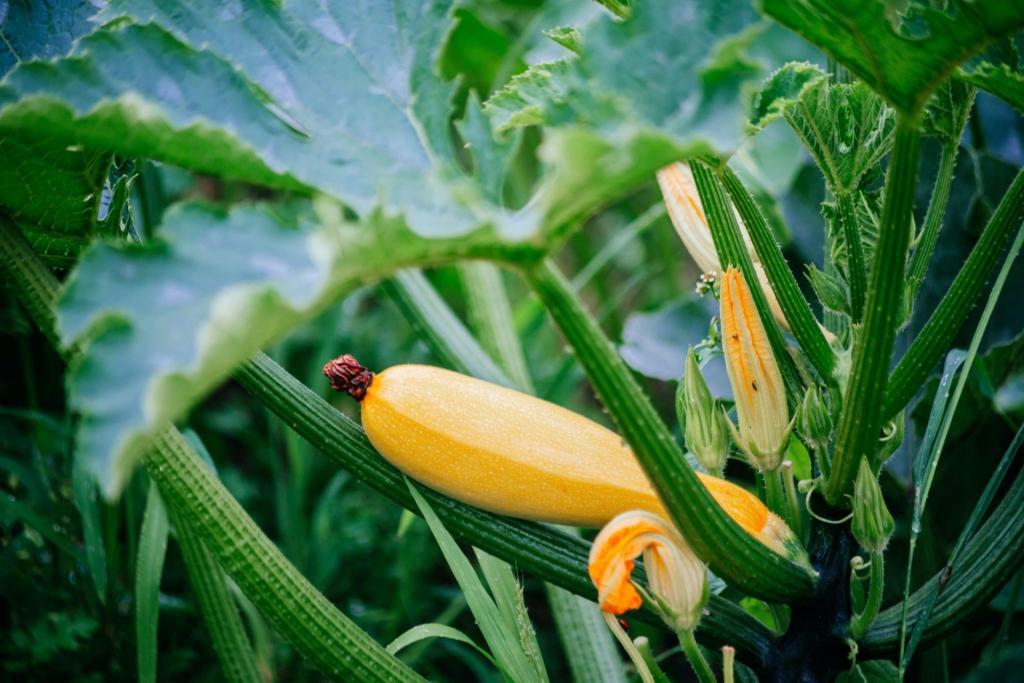
Chapter six covers common fruit and vegetables and their care needs. I typically don’t grow all these fruits and vegetables every year. There are some plants that I will always grow and some that I will grow if I have room and time. For example, I will likely always plant tomatoes, squash, potatoes, peppers, garlic, onions, and cucumbers. These vegetables produce a huge bounty, are readily eaten by my family, and grow well in my area.
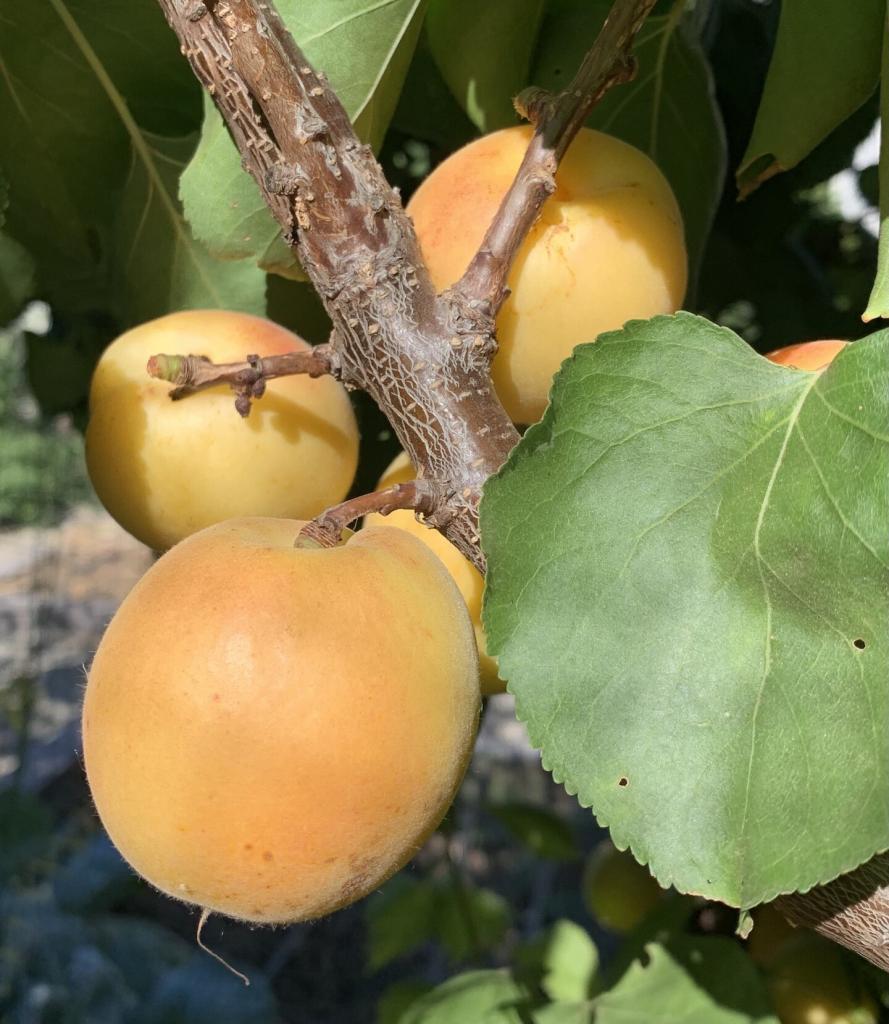
In Chapter seven, I bring the calendar together so you can plan your backyard growing. Vegetable and fruit growing is about timing. It has to do with when you plant, when and how you care for those plants, and when you harvest. Growing takes long-term planning to figure out what you want and when to harvest it.
In this chapter, I provide monthly vegetable and fruit growing tasks as well as a to do list. You can spread out your labor, planting, and harvesting throughout the year to get food most frequently. I am trying to avoid the case where you have three months of food in one month during the summer, for example, when all your tomatoes ripen in the first week of July. I think it’s wise to spread food production throughout the year.
Chapter eight finishes the book with two very important tables. The first table shows the proper monthly periods to sow seeds or transplant plants. The second table illustrates the approximate monthly periods of fruit and vegetable ripening times.
What are the Benefits of Growing Your Own Fruits and Vegetables?
Let’s talk about the benefits of home food gardening. In my opinion, the first and most significant reason to grow fruits and vegetables is to get outside. Gardening is a wonderful way to get outdoors and experience nature from the safety of your backyard. You can experience the song of birds at sunrise, the sound of the breeze through the trees, and the smell of soil. Planting, watering, digging, pruning, and weeding in the elements is therapy for the soul.
It is no surprise that research continues to find only positive results from spending more time in nature. The effects of reduced time in nature are termed nature deficit disorder and it is a real problem. It is found to be related to obesity, high blood pressure, high cholesterol, and diabetes. This issue continues to trend upward as society spends less time outside. Obesity is especially a concerning trend in children.
The more children sit on the couch and the less they play outdoors, the more obese they can become. There are also correlations between time outdoors and mental ailments, including autism and depression, and social and behavioral difficulties. All is not lost. Studies have shown that the nature deficit can be overcome with consistent increases in time in nature. Gardening is thought to be an effective way to spend time in nature.
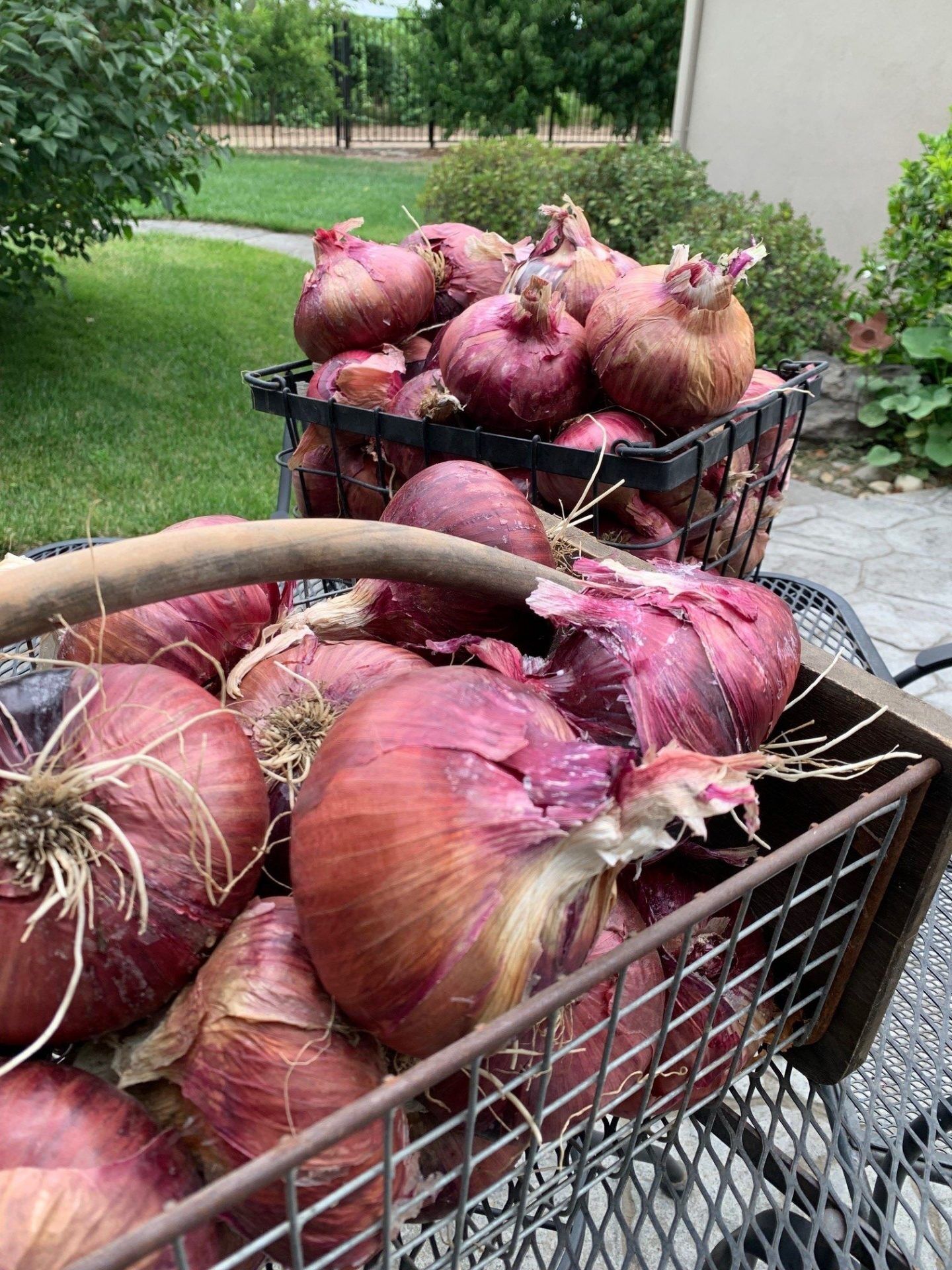
Gardening is actually a good form of exercise. It may not seem this way, but it really is. What about turning the soil in the garden patch, using a pick to dig out a tree stump, pruning bushes, or trimming your fruit trees? These are all activities that get you off the couch and into the sunshine. They help tone your muscles and improve your mobility.
There is no doubt that heavy yard work will raise your heart rate. Try digging a hole in clay soil. As a former weightlifter, I used to spend hours lifting heavy things in the gym. In the yard, I lift things, swing things, and perform a variety of activities that not only help exercise my muscles but also produce results. It could be because I am getting older, but I am often sore the next day from heavy yard work.
Growing food in your backyard can save you money. Retail prices for produce are increasing rapidly. The days of 10-cent lettuce heads are gone. For example, as of the date of this book, yellow onions are now more than $1 a pound on the West Coast in many stores. In some cases, they are nearly $2 per pound! It costs approximately two cents per onion transplant. Water costs a little bit, and fertilizer, if you wish to add that. That is a pretty handsome profit for one onion, approximately one pound (ca. 0.5 kilograms) in size.
In addition, you don’t have to pay for gas to pick up your onions at the store. Tomato and pepper plants may cost slightly more upfront; however, one plant can produce many fruits. What about a peach tree that produces 150 pounds (ca. 68 kilograms) of peaches? It may take some labor to prune your trees and spray them, but you would definitely make a profit.
We all know that growing your own food results in better-tasting food. The tomato is a classic example. A tomato fresh-picked from the plant, still warm from the sun, is just heaven. I have never purchased a tomato in a store that comes close to one grown in the garden. Even tomatoes sold as organic or on the vine in the grocery store don’t compare.
Another notable example is the peach. For transport to storage, peaches are often harvested when they are not ripe. Peaches that aren’t ripe lack flavor. In the store, they are typically hard as a rock or overripened and mealy. When you grow peaches yourself, you can make sure you pick them at the peak of their ripeness. Also, you don’t have to stress about damaging them during transport to your back door. I don’t purchase peaches from the store anymore. There are many examples of fruits and vegetables that just taste better when grown yourself.
Of course, the benefits of growing food in your backyard is that they are fresh. They have not been stored or transported, adding time in the supply chain. You can leave your product on the plant until they are at the exact desired ripeness. If they are overripe, well, that is just your fault. But often, you can try your fruits or vegetables when you think they’re ready. If they’re not ready, just leave them on the plant longer. It’s that easy. One of my favorite things to do is just walk out into the backyard, pick fruits and vegetables, and eat them right there.
Fruits and vegetables have their own natural beauty. Sure, they don’t look like an elegant Japanese maple tree or sophisticated landscaping, but they can definitely compete with ornamental plants. A peach or plum tree just before leaf fall is spectacular. The bright oranges and yellows are just amazing. The blossoms of many fruit trees are equally delightful for the eyes. You can use fruit trees around the yard as accent plants, edging for lawns, or border plants.
Vegetables exhibit a unique structure that contrasts with traditional landscaping. Onions and garlic, broccoli, and cauliflower all have their own unique shape and shade of green, adding to the variety of the landscape. As the saying goes, “variety is the spice of life.” Variety makes your backyard look luxurious and pleasing.
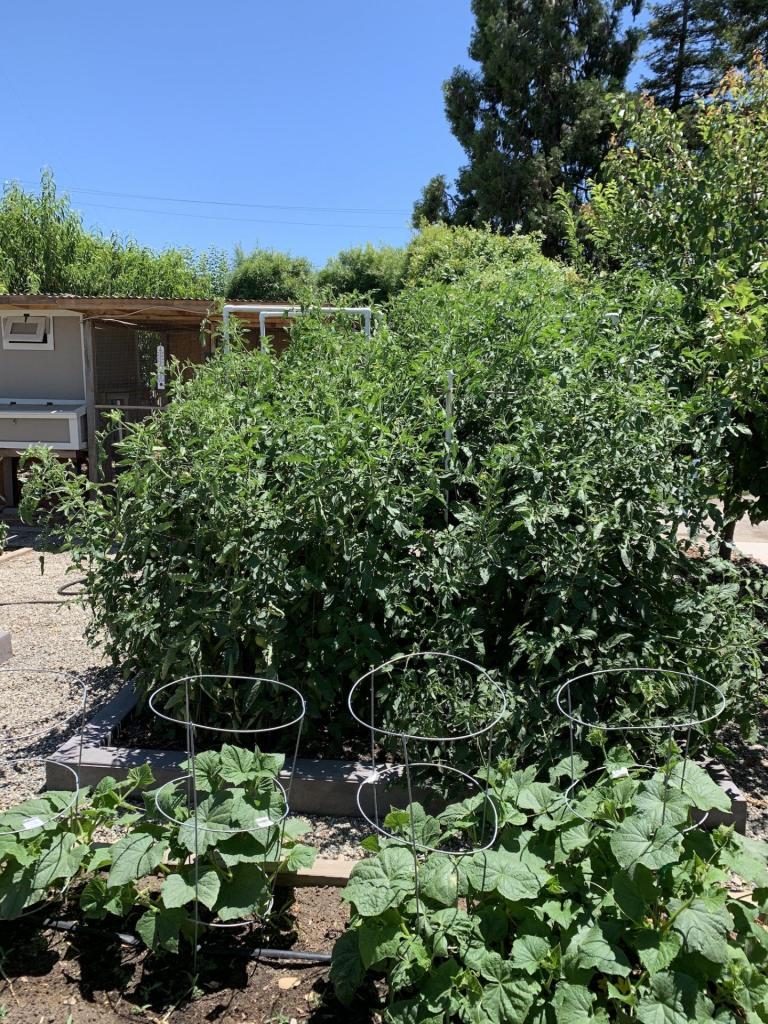
Another really compelling reason for growing food in your backyard is that you are aware of exactly what you put in your food. You know if it is organic or not. If it was not organic, you are aware of exactly what was used to control the pests. You know you didn’t overspray or over apply chemicals. While I always strive to be as organic as possible, sometimes there is a need to use chemicals. In these cases, I apply them strictly to label instructions. Of course, there are certain things I will never spray near my food, such as weed killers or other chemicals that can get into the soil and into the food that you’re eating.
Think about how much gas you are saving when you grow your own fruits and vegetables. Many of our fruits and vegetables are shipped long distances, from field, to distribution center, then to our grocery stores, costing valuable fuel in the process. Fuel and transportation contribute to climate change and road congestion. Walking into the backyard, grabbing that food, walking back into the house, and eating offers significant benefits to the environment.
Growing your own food in your backyard is like having a classroom at your house. It provides fantastic opportunities to educate others about our food supply. In addition, visitors to your house will get tours of your food-growing operation. I particularly like giving tours to children who are amazed at what an onion plant looks like. This investment in the younger generation can help them save the environment.
Growing food in your backyard is easier than one thinks and involves a lot of trial and error. The experts didn’t just immediately start growing fruits and vegetables successfully. They failed, adjusted, and then tried again. Don’t be discouraged by your failures. Learn from them and try again. Chances are that you have a patch of ground somewhere in the backyard of your house ready for some experimentation. It isn’t an expensive hobby, and it is easy to experiment. Go ahead and give it a try.
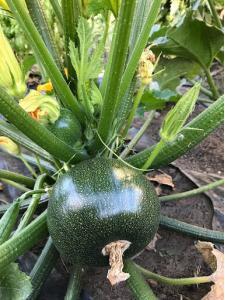
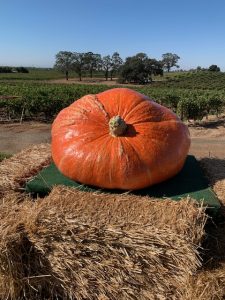
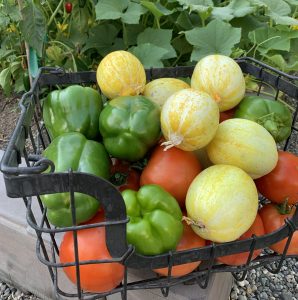
The world is at your finger tips. There are thousands of books and even more web sites with information. I believe there are relatively few resources about growing food in your backyard which is one reason why my book is unique. There are plenty of topical books about vegetale gardening, rasied bed gardening, or fruit trees; however few wrap these into one book with schedules. Many want to grow a full years worth of food in their backyards. This is possible in my opnion!
My Blog Information
My Garden Blog includes numerous garden related topics, such as How to Grow Your Own Onions, Composting, Ten Reasons Why it is Good to Grow Your Own Food, and more. I add topics to my blog that relate to my books. Be sure to join my newletter for updates. While I am at it, don’t forget to check out my book Backyard Big: Growing Atlantic Giant Pumpkins in Your Backyard, as well as my related blogs including my 2023 Giant Pumpkin Growing Diary, Autobiography of a Pretty Giant Pumpkin (a blog written by my pumpkin), Learning about Big Pumpkins, Giant Pumpkin Growing Secrets, and more.
External Sources
I am definately not the only resource of information and I don’t claim to be the only authority. I encourage the reader to research this topic. The New Western Garden Book: The Ultimate Gardening Guide is an incredible resource. This book has everything one needs. My only criticism is that it is so large it is difficult to digest. The joe gardener web site, with Joe himself offers books, podcasts, and even classes on growing vegetables. A few books I always seem to check include the California Master Gardener Handbook (700+ pages!), the Fruit Gardener’s Bible by Lewis Hill and Leonard Perry, and The Complete Vegetable & Herb Gardener by Burpee.
